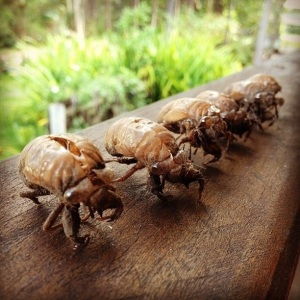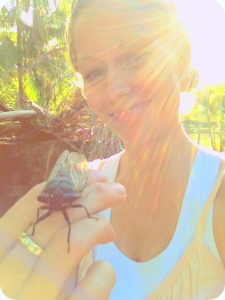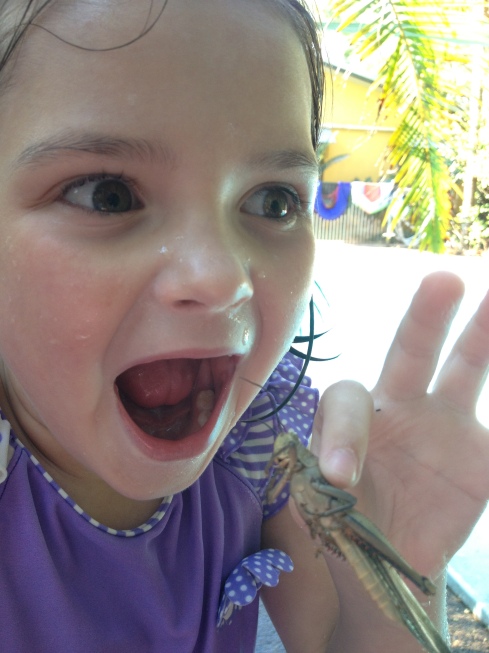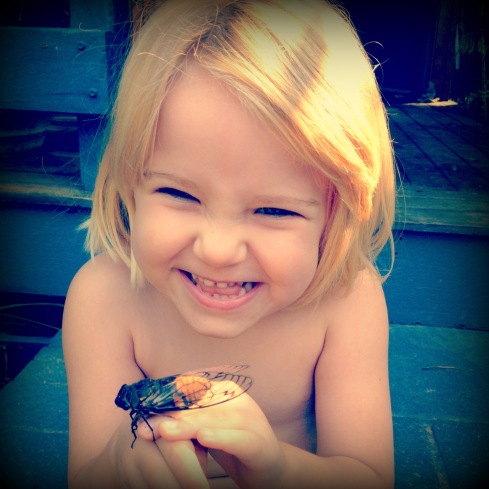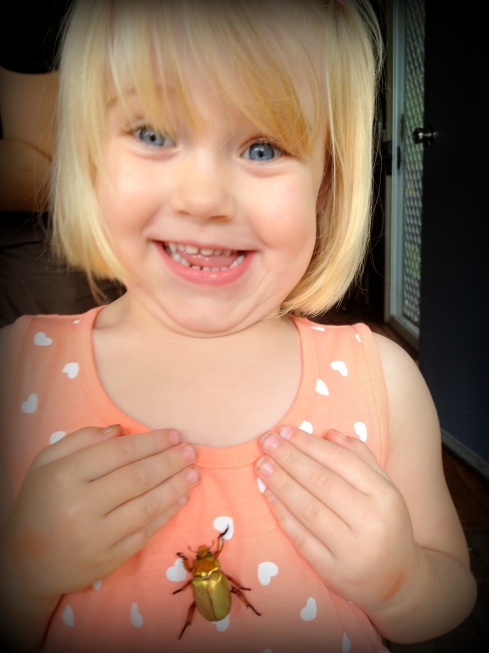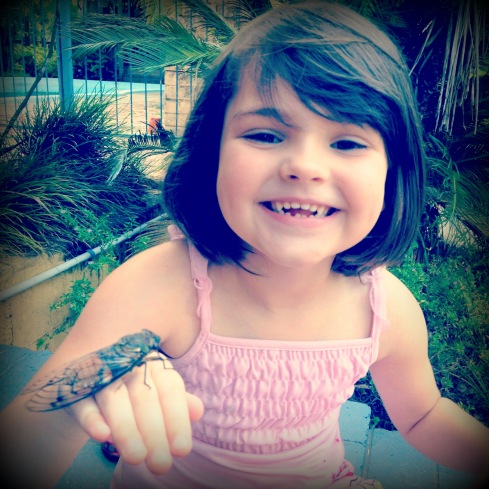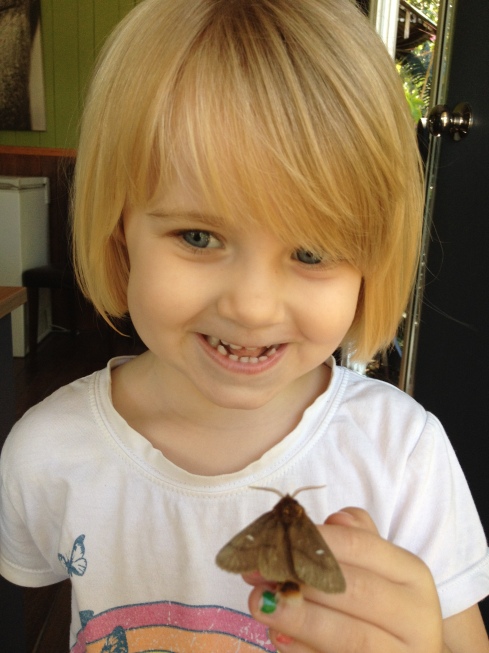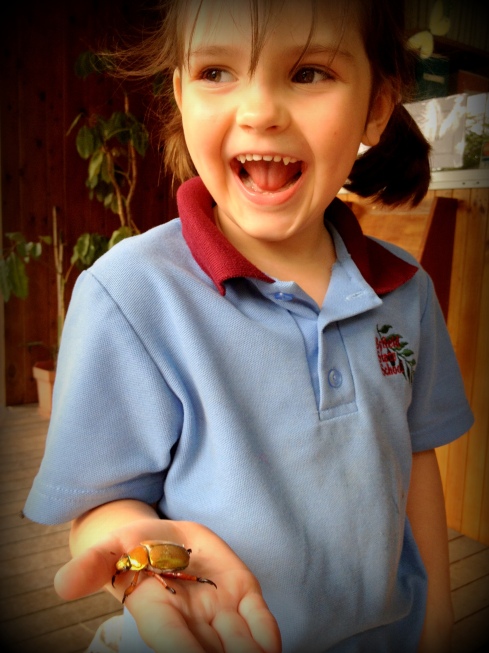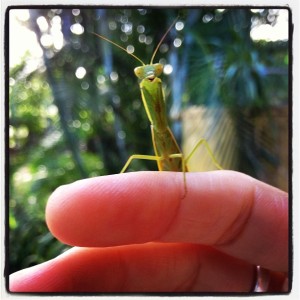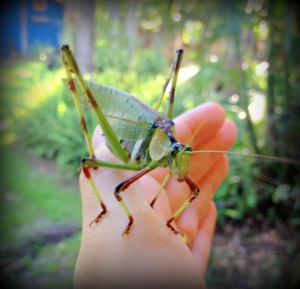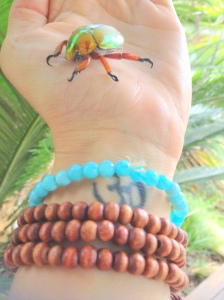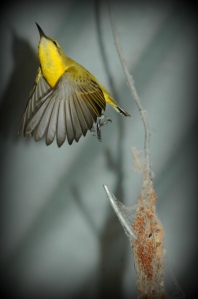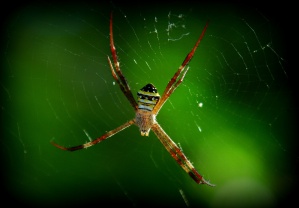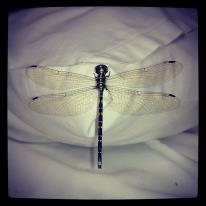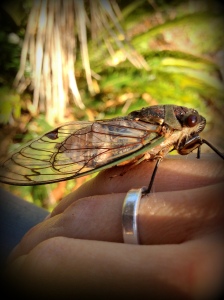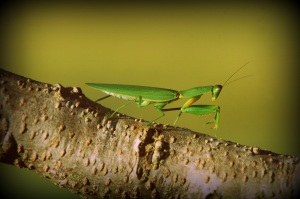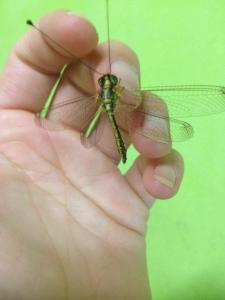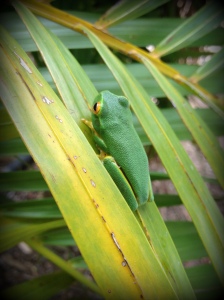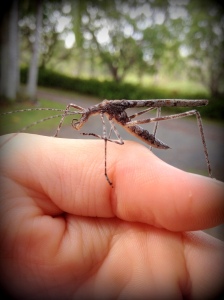I want to preface this first post by explaining a few things about this blog. I started this blog because I LOVE bugs. I love all creatures really; furry, winged, creepy-crawly…
And every time I find a new one, I get online and research it until I find out what it is or I answer whatever question I have about it. I don’t want this blog to be a place where people come and get confused. There are A LOT of web pages out there that do that. I’m not an Entomologist, I’m not a scientist, I’m just a person with an insatiable thirst for knowledge about these things. You could say I’m obsessed.
So, I won’t be listing all the scientific names, the classes, the sub-classes, etc. I will tell you what it’s called it lay terms and possibly the family of bugs it comes from (i.e. grasshopper, beetle etc.) and try to keep things as simple and interesting as possible.
So, let’s get started on our first one!
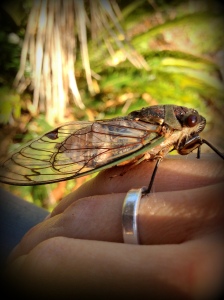
Now, I’m showing favoritism here by having the cicada first. I absolutely love this bug. When it comes to bugs, the bigger, the better for me. And when I held my first cicada (that I saved from near death in a pool, by the way) I was hooked on this guy. But, I know their sheer size can be intimidating for a lot of people. I hope by the end of this post you will see how amazing and harmless they really are.
There is a TON of confusion when it comes to this particular bug. First of all, it’s NOT a locust. I’m sure to a true Entomologist, having someone say, “Locust, cicada, whatever…” is laughable. But I found out quickly that it is, across the board, the first thing people think of when I posted the pictures.
So, let me explain.
A locust is actually a grasshopper. More specifically, a long-horned grasshopper or a grasshopper with long thread like antennae. The cicada is related to the aphid (that’s as technical as I’ll get) which is a class of bug that feeds by sucking sap from plants, whereas grasshoppers have mandibles that they use to bite their food into smaller pieces that they then move to their mouth.
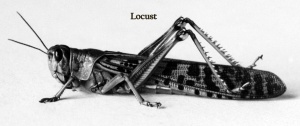
Cicadas come in two varieties; the annual that breed and hatch once per year and the periodical, which have a 13 or a 17 year life cycle. There are three species of the 13-year cicadas and three species of the 17-year cicadas, all of which have a unique size, colour and song. Some of the common, and clever names given to them are Green Grocer, Yellow Monday, Chocolate Soldier, Double Drummer, Blue Moon and Masked Devil. These are just some of the names for the Australian cicadas. There are many more and a whole slew of names for cicadas in other parts of the world with a grand total of 2000 different species in all.
Fun Fact: The Australian Green Grocer is among one of the loudest insects in the world reaching close to 120dB!
The confusion between the periodical cicadas, specifically, and the locusts come from the story in the Bible regarding the locust plagues in Egypt and Palestine. So when the cicadas first made their appearance, the misnomer stuck and has ‘plagued’ them to this day.
The periodical cicadas, after their 13 or 17 years underground as nymphs feeding on tree sap, begin their voyage upward until they are about one inch deep and await the perfect time to emerge. As of yet, I have not been able to find any information on what it is that causes literally millions of these creatures to emerge together. But when the time comes, they emerge, make their way up tree trunks, weeds, or any upright object they can attach to (our chicken coop as I found out) and they molt their “skin” which is actually an exoskeleton. These are the little shells you find everywhere and the ones we used to hang on our shirts as kids.
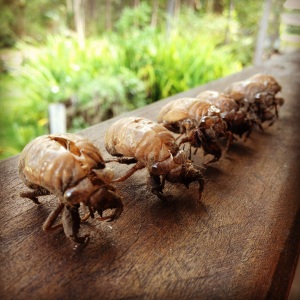
You can see a great video of a molting here —-> http://www.youtube.com/watch?v=go4MqVq9HVM
After molting, the only thing on their minds is mating. The males sing their song to attract an eager female and mating takes place. Then the females lay their eggs by using a small saw-like device at the end of the abdomen to slit open live twigs, make pockets where they will deposit anywhere from 24-28 eggs in each slit for a grand total of around 400 to 600 eggs in all. In about 6-7 weeks, the nymphs emerge, drop to the ground, burrow in the dirt and the whole process begins again.
I was sad to find out that the periodical cicada, once it has emerged, only lives about three to four weeks. But what an amazing creature to hold in your hand and just think of where you were when this magnificent bug began its life cycle.
I hope I’ve answered some questions and given you a new appreciation for the amazing cicada! And if you are still too scared to hold one, just remember the picture of my 5-year old holding one…and smiling.

Charlie holding a cicada.
Tags: annual cicada, Australian cicada, cicada, cicada life cycle, cicada molting, double drummer, green grocer, masked devil, periodical cicada


